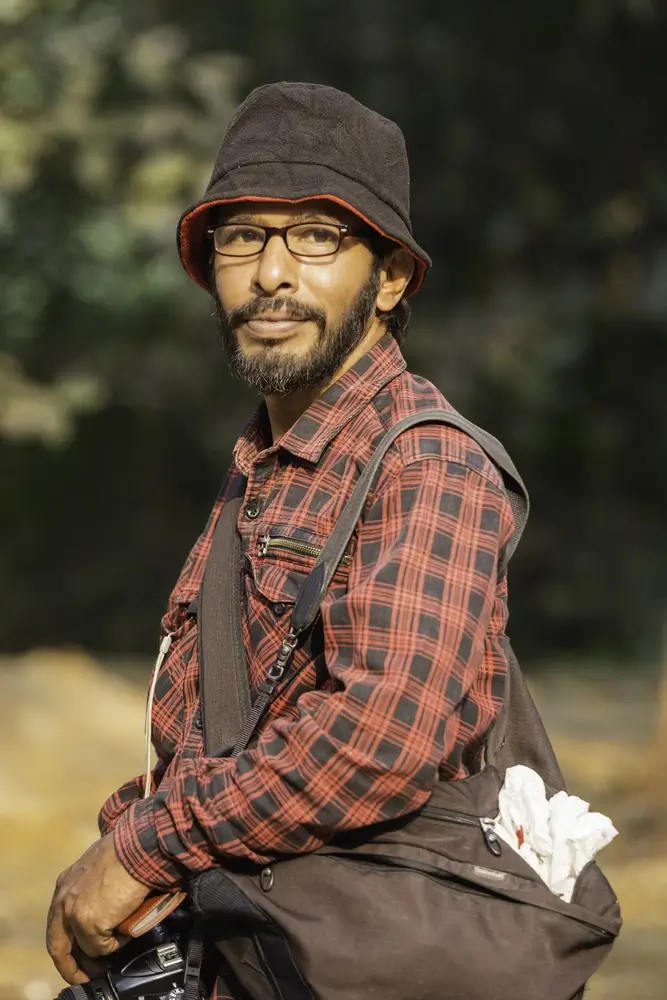I’m a street and documentary photographer from Dhaka. I began taking photos in the mid-90s, but it wasn’t until 2015 that I pursued photography seriously. My profession is in private service at a construction company.
During the "Pilkhana Tragedy" on February 25, 2009, the armed border guards opened fire on civilians. I was taking pictures as they approached their gate, but suddenly, a bullet from a Chinese rifle hit me. My sciatic nerve was severely injured, and my leg was shattered into multiple pieces. From 2009 to 2011, I underwent seven major surgeries. I was bedridden for 4 ½ years. Unfortunately, during that time, my hard drive crashed, and I lost all my images from the 80s up to February 2009. It was an incredibly frustrating period for me.
When I received my first DSLR camera in 2015, I picked up photography again. Despite the constant pain in my leg, I’ve never stopped. I never leave home without my camera, even for a single day.
My work – Since 2016, I’ve focused on documenting the Bihari and Dalit communities, as well as homeless and street kids, urban slum communities, the tannery, and plastic industries, among other subjects.
Achievements – I’ve participated in about 50 national exhibitions (winning 1st prize twice), and I’ve exhibited my work in Kolkata and Romania as a solo participant. I’ve received several FIAP honorable mentions and acceptances in salons worldwide. One of my photos was published in the 2018 edition of the 'Wisden' annual cricket book, often referred to as the Bible of Cricket. My work has also been featured in numerous international photography websites and magazines.
In 2020, I won the FIAP Gold Medal and the "Photographer of the Year" trophy at the ABP Salon, a prestigious contest organized by the Bangladesh Photographic Society (BPS).
Workshops – I’ve attended both short and long photography workshops with GMB Akash, the late Anwar Hossain Anu, M. R. Hasan, Prito Reja, Chanchal Mahmud, and Rafiqul Islam.
Mentorship – I’ve also served as a judge for several national photography exhibitions between 2018 and 2019.
Life in Bihari Camp, Dhaka, Bangladesh
A young girl writes a poem in which she asks a simple yet profound question—one that no one can answer. She asks, Who am I? Her forefathers were born in India, they migrated to Pakistan, and she was born in Bangladesh. India abandoned them long ago, Bangladesh refuses to accept them as children of the land, and Pakistan won’t take them back. She says she has many names: Bihari, Maura, Muhajir, Non-Bangalee, Marwari, Urdu-speaker, Refugee, and Stranded Pakistani. But she desires only one identity: Human.
This is the reality for the 160,000 camp-based Urdu-speaking community members in Bangladesh. In Geneva Camp alone, around 50,000 Urdu-speaking people of Indian and Pakistani origin live in difficult conditions.
After the partition of India in 1947, amidst large-scale communal riots on both sides of the border, hundreds of thousands of Muslims from Bihar, Kolkata, Uttar Pradesh, Madhya Pradesh, and as far as Hyderabad migrated to what was then East Pakistan. Muhammad Ali Jinnah, the leader of the All India Muslim League, promised them that Pakistan would be a "safe haven for all Muslims." As is typical of people migrating from a shared locality, the Biharis formed separate clusters from the Bengalis. Their communities became concentrated in areas like Mohammadpur, Mirpur, Khulna, Chittagong, and Santahar.
The new generation, born after the war, now comprises the majority of camp residents. They have no affiliations with either India or Pakistan. They were born in Bangladesh and identify as Bangladeshis. Unfortunately, the state is reluctant to accept them as such. It is a complex issue, with the majority population skeptical of their loyalty to the country they wish to call home.
The inhumane conditions in which they live and the societal effects of their marginalization make it imperative to resolve this painful issue.
365 Photography Library
This is the largest photography library in Bangladesh, with around 2,000 books on photography. It’s free for everyone, and I created it for young photographers and the next generation. I plan to leave it to them as my legacy before I die.
www.365photographylibrary.com
